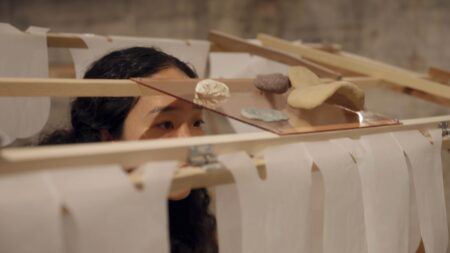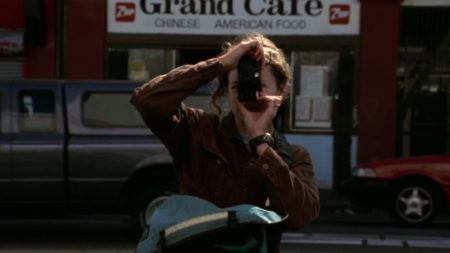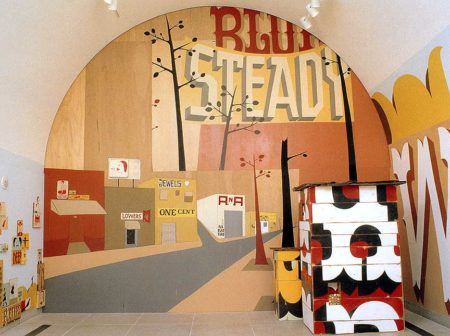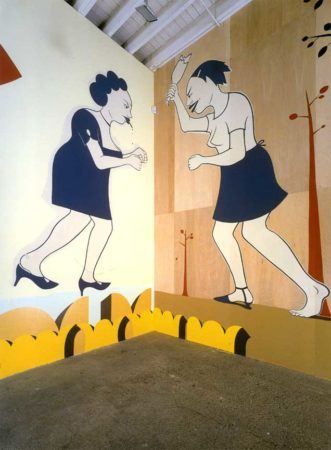Margaret Kilgallen

Margaret Kilgallen was born in 1967 in Washington, D.C., and received her BA in printmaking from Colorado College in 1989. Shortly afterward, the artist moved to San Francisco, where she took up surfing and immersed herself in the Mission District street scene. Kilgallen was influenced by the hand-painted signs and colorful murals she saw while biking around her Mission District neighborhood. Additionally, her early experiences as a librarian and bookbinder in the San Francisco Public Library helped the artist develop an encyclopedic knowledge of American folk signs, printmaking, and letterforms. Working on found and salvaged material and graffiti, Kilgallen created works that highlighted the beauty of everyday life.
Whether painting directly on the wall or salvaged bookends, discarded wood, paper, and cardboard, Kilgallen’s work recalls a time when craft and the handmade were the dominant aesthetic. She developed a visual language of words based on their aesthetic sensibilities, using words such as “sloe,” and “lush” for how they sounded when spoken aloud. In Untitled (Mollasas) (1997), the artist spells out the word “mollasas” in decorative lettering borrowed from sixteenth-century letter form. Kilgallen intentionally misspelled the word molasses, calling attention to the formal composition of the word, rather than the information it conveys. Likewise, in works such as “Sloe” (1998) or Untitled (Pride), the artist combines text with flat, cartoon-like depictions of everyday people. Strong, independent women—walking, surfing, fighting, skating, and biking—are featured prominently in these compositions. Killgalen says, “I like to paint images of women who I find inspiring, and I don’t like to choose people that everybody knows. I like to choose people that just do small things, and yet somehow hit me in my heart.”
In addition to her studio practice, the artist’s work also involved graffiti. As one of the few well-known women graffiti artists of her time, she adopted the moniker Slaughter, a reference to her personal heroine banjo player Matokie Slaughter. Kilgallen used her knowledge of decorative lettering to cover freight trains with variations of the words “Slaughter,” “Meta,” or “Matokie Slaughter.” Working quickly and without stencils or projections, the artist loved to create works “that show the evidence of the human hand.” In doing so, Kilgallen physically placed her mark, as well as those of everyday heroines, onto the physical landscape of the Bay Area. Working on salvaged materials or spray painting walls and trains, Killgallen’s work evoked the styles of local hand-painted signs, celebrating the beauty of the every day while evoking nostalgia for a foregone Americana.
Margaret Kilgallen lived in San Francisco, with her husband, Barry McGee, where she passed away in 2001.
Videos 3
-
Margaret Kilgallen




